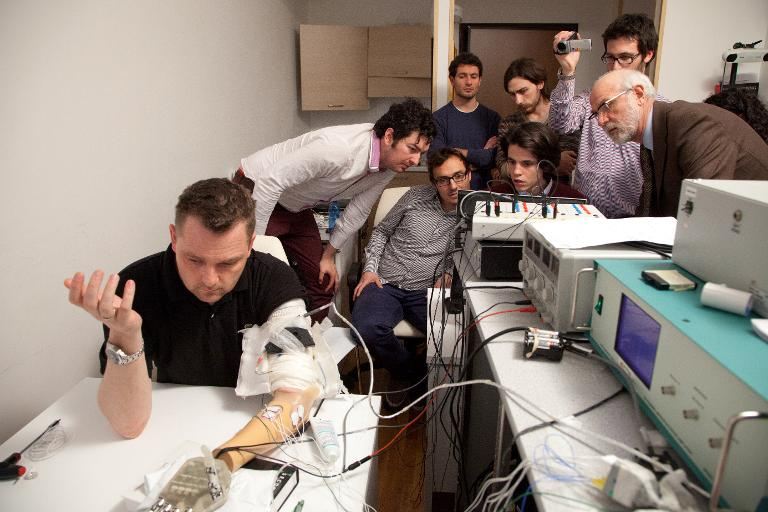Amputee Dennis Aabo Sørensen wears a sensory feedback-enabled prosthetic in Rome. Photo released by Lifehand2
A bionic hand has restored a person’s sense of touch to a near-natural state for the very first time after surgeons implanted electrodes into the patient’s nerves and connected them to sensors on the prosthesis.
“I didn’t realise it was possible,” said Dennis Aabo Sørensen from Aalborg, Denmark, the recipient of the bionic hand. “The feeling is very close to the sensation you get when you touch things with your normal hand.”
Dr Silvestro Micera and a team at the Swiss Federal Institute of Technology in Lausanne, Switzerland, and The Sant’Anna School of Advanced Studies in Italy developed the technology.
New Scientist reported how the sense of touch had been restored to 36-year-old Sørensen’s left hand.
Surgeons implanted electrodes inside the ulnar and median nerve bundles in Sørensen’s upper arm. These two nerves carry sensations from most of the hand.
The team linked the electrodes to pressure sensors on the palm and fingertips of the robotic hand by using cables running down Sørensen’s arm.
When Sørensen used the bionic hand to grasp an object, electrical signals from the pads fired into the two nerves, providing him with a sense of touch. Ninety per cent of the time, he could even differentiate objects while blindfolded: cotton wool, a block of wood, and a plastic cup.

A team keeps a close eye on the functioning of a sensory feedback-enabled prosthetic hand Dennis Aabo Sørensen wears in Rome. Photo released by Lifehand2
Before such a bionic hand becomes clinically available, the team needs to test its long-term viability. In the clinical trial on Sørensen, 90pc of the electrodes still worked after 30 days.
Sørensen, who lost his hand 10 years ago when a firework rocket he was holding exploded during New Year’s Eve celebrations, had to give up the bionic hand after 30 days, as well, due to regulations governing the use of surgically implanted electrodes.
Still, knowing how firmly he was grasping an object, such as a piece of fruit, has been revolutionary.
“With my existing prosthesis I always have to look at what I’m doing with it,” he said. “(The bionic hand is) an amazing product, I’d take one tomorrow if I could.”